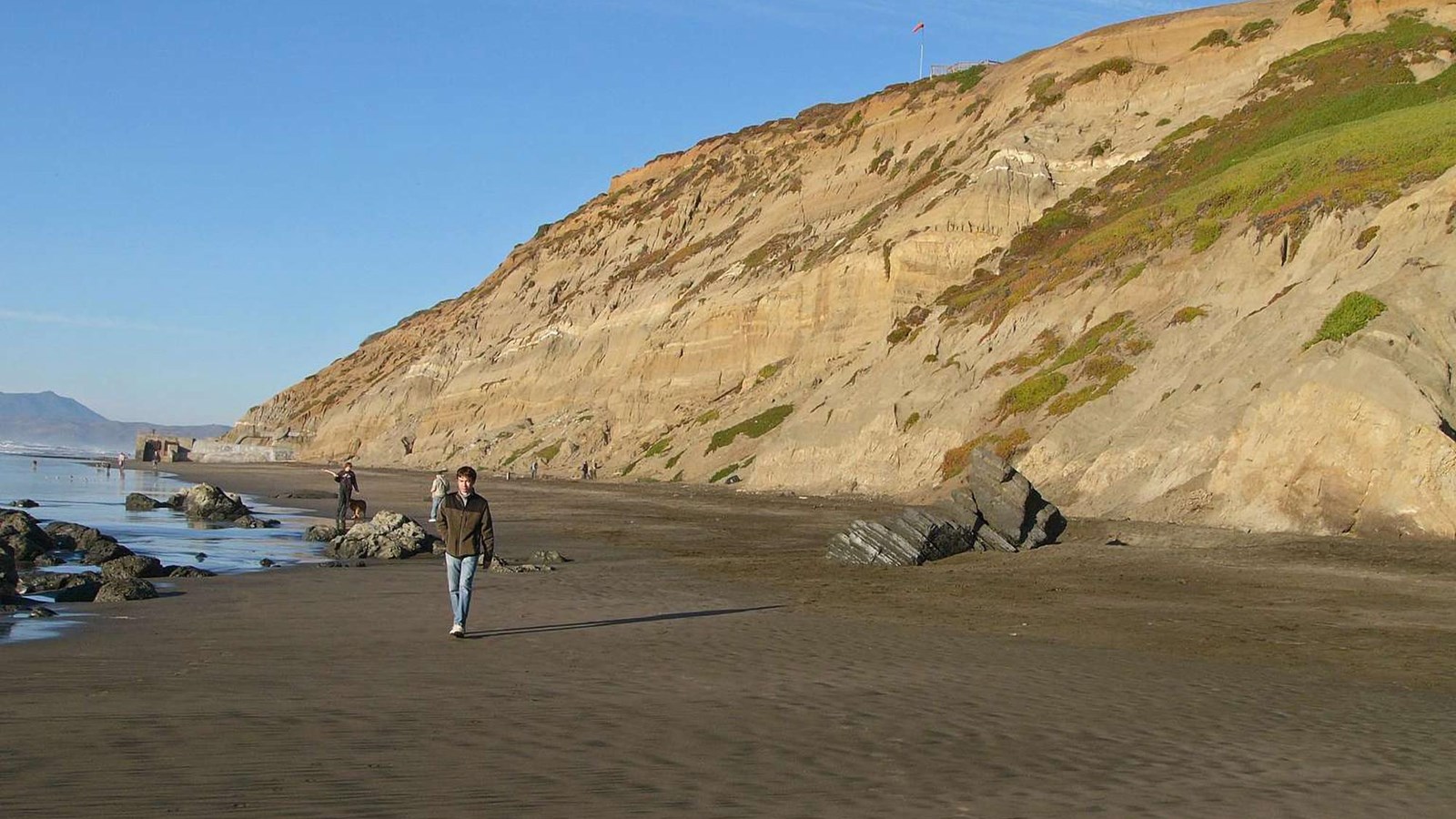Last updated: February 1, 2021
Place
Funston Beach

Beach/Water Access, Scenic View/Photo Spot
Funston Beach has is a unique oceanside hang to the south of San Francisco with 200 foot bluffs, a network of trails and beach access. The trails are suitable for horses as well as hiking.
Please note: Funston Beach is very windy. The way down to the beach is steep and strenuous on the walk up. Additionally, the ocean waves and tides are hard to predict, and can be dangerous. Be vigilant when you or anyone you're with goes near the water.
Ice Ages Revealed
Fort Funston sits on a bluff made up of soft, sedimentary rocks that are part of the Merced Formation, a sedimentary deposit formed in a basin along the San Andreas fault during the Ice Ages of the last three million years. A walk along the beach will take you through a series of rocks that reflect 300 foot (100m) sea level rise and fall events due to glacial retreats and advances.
The rocks tell the story of episodic changes from shallow offshore conditions that became sandy shorelines and beaches, wind-blown dunes and bays filled with clams, gravelly stream deposits and orange and green soil horizons developed during low sea level times.
The cliffs here are truly an outdoor classroom for the geologically inclined. Near the storm water outfall pipe at the base of the bluff, there is even a distinctive white ash bed that came from a huge volcanic eruption near Mt. Lassen a half million years ago.
Coastal Bank Swallows
Coastal bank swallows are tiny but mighty migratory bird friends. Endangered due to habitat loss, today there are only two known coastal bank swallow colonies in California, one here at Fort Funston. Bank swallows make their homes by burrowing deep into cliffsides, digging tunnels about the width of a hot dog into a cliff face, and constructing nests deep inside at the tunnels' far end, hidden from view. They return to Fort Funston every year between March and April and stay until August, when they make their 5,000 mile journey to South America for the winter.
A Changing Climate
Like most coastal settings, Fort Funston is susceptible to sea level rise. The burning of fossil fuels like coal and gas releases carbon dioxide, which acts like a blanket around the planet, raising temperatures and disrupting the climate. As global air and ocean temperatures rise, so are ocean tides, encroaching on shorelines.
The cliffs at Fort Funston are made of soft sandstone that's prone to erosion. We've already seen the destructive force of change over time, as some of the gun batteries have lost their toehold and are now on the beach!
